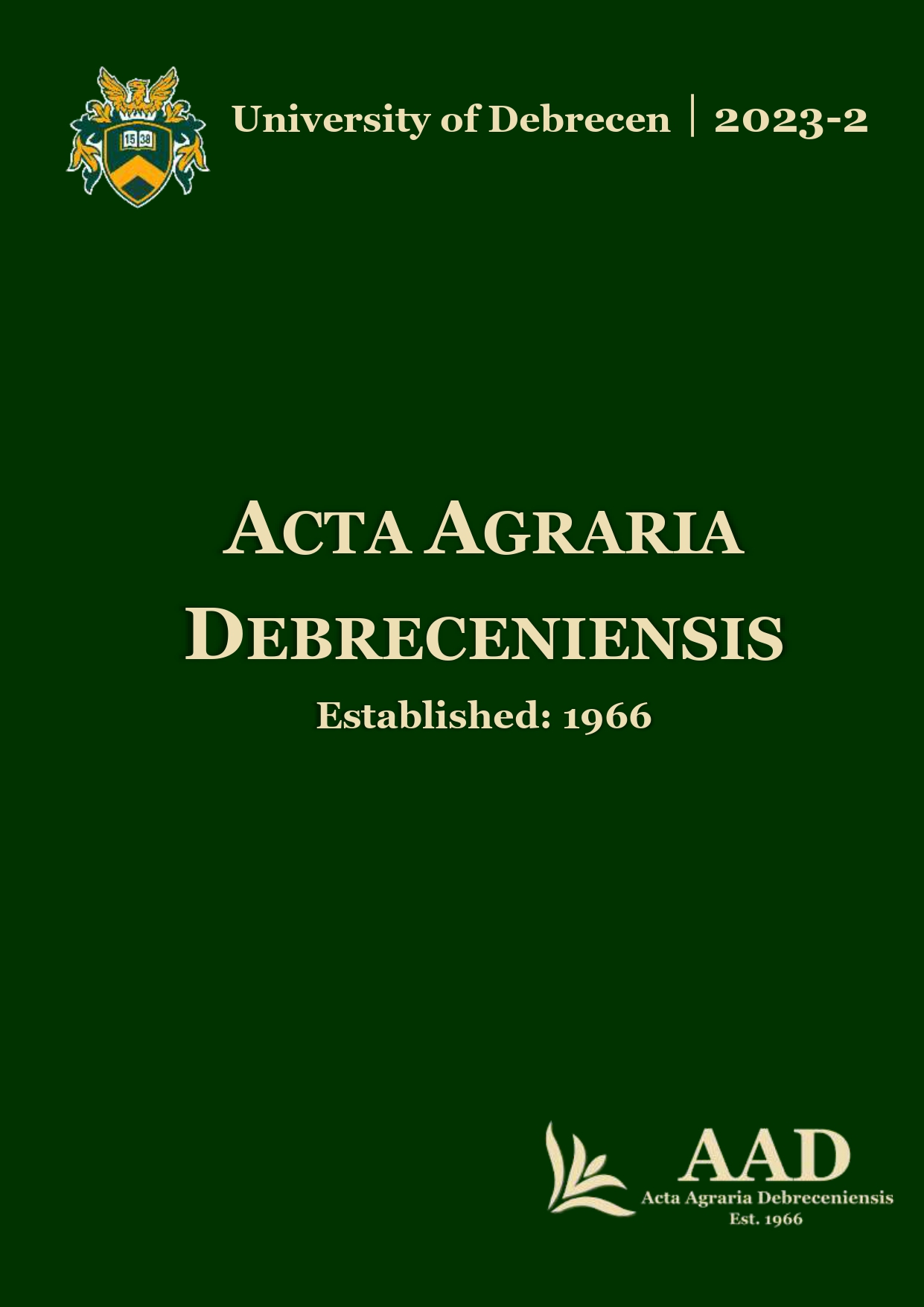Growth and yield patterns of black locust (Robinia pseudoacacia L.) sample trees affected by site conditions: case studies
Authors
View
Keywords
License
Copyright (c) 2023 by the Author(s)

This work is licensed under a Creative Commons Attribution 4.0 International License.
How To Cite
Abstract
The trees removed from the long-term experiment plots are available for the measurements as lying trees. Through the determination of the volume in sections along the stem, the stem form, the stem volume and other factors can be specified. The comparison of the stems of individual trees of first and third yield classes of black locust (Robinia pseudoacacia L.) stands shows that site conditions have a main effect on the yield (mean tree volume). The difference can be as high as 53% at the age of 30 depending on the sites. To determine the growth patterns based on tree volume is rather a new approach in the light of the relevant literature. The obtained results also highlight the importance of choosing the appropriate tree species for a given site.
References
- Andrašev, S.A.–Bobinac,M.–Dubravac T.–Šušić, N. (2013): Diameter structure Changes in the Pre-Maturing Black Locust and Common Hackberry Stand in the Subotica-Horgoš Sands under the Influence of a Late Thinning. SEEFOR 11(2), 111–126, https://doi.org/10.15177/seefor.20-13
- Burkhart, H.E.–Avery, T.E.–Bullock, B.P. (2019): Forest measurements, 6th ed.; Waveland Press: Long Grove, Illinois, USA, pp. 434.
- Housset, J.M.–Tóth, E.Gy.–Girardin, M P.– Tremblay ,F.–Motta,R.–Bergeron, Y.–Carcaillet, C. (2021): Tree-rings, genetics and the environment: Complex interactions at the rear edge of species distribution range. Dendrochronologia, 69, 125863, https://doi.org/10.1016/j.dendro.2021.125863
- Járó, Z. (1972): Az erdészeti termőhelyértékelés rendszere. In Erdőművelés, Danszky, I., Ed.; Mezőgazdasági Kiadó: Budapest, Hungary, pp. 47–256. (In Hungarian)
- Keyimu, M.–Li, Z.– Fu, B.–Chen, W.–Wei, J.–Jiao, L.–Gao, G.–Lü, Y. (2021): Spatial differences in the radial growth responses of black locust (Robinia pseudoacacia Linn.) to climate on the Loess Plateau, China, Dendrochronologia, 67, 125832, https://doi.org/10.1016/j.dendro.2021.125832
- Kraszkiewicz, A. (2021): Productivity of Black Locust (Robinia pseudoacacia L.) Grown on a Varying Habitats in Southeastern Poland. Forests, 12(4), 470, https://doi.org/10.3390/f12040470
- Moser-Reischl, A.–Rahman, M. A.–Pauleit, S.–Pretzsch, H.–Rötzer, T. (2019): Growth patterns and effects of urban microclimate on two physiologically contrasting urban tree species. Landsc. Urban Plan., 183, 88–99, https://doi.org/10.1016/j.landurbplan.2018.11.004
- National Land Centre (NLC) (Hungary). Available online: https://nfk.gov.hu/Adatbazisok_linkjei___Erdeszet_news_305 (accessed on 12.09.2023).
- Nicolescu, V. N.–Rédei, K.–Mason, W. L.–Vor, T.–Pöetzelsberger, E.–Bastien, J. C.–Brus R.–Benčať T.–Đodan M.–Cvjetkovic B.–Andrašev, S.–La Porta, N.–Lavnyy, V.–Mandžukovski, D.–Petkova, K.–Roženbergar, D.–Wąsik, R.–Mohren, G.M.J.–Monteverdi, M.C.–Musch, B.–Klisz, M.–Perić, S.–Keça, L.–Bartlett, D.–Hernea, C.–Pástor, M. (2020): Ecology, growth and management of black locust (Robinia pseudoacacia L.), a non-native species integrated into European forests. J. For. Res, 31(4), 1081–1101, https://doi.org/10.1007/s11676-020-01116-8
- Rédei, K. (1984): Akácosok fatermése. Erdészeti Kutatások, 76–77, 195–204. (in Hungarian)
- Rédei, K. (2020): Bevezetés az ültetvényszerű fatermesztés gyakorlatába, 2nd ed.; MED-KÖR Bt.: Kecskemét, Hungary, pp. 134. (in Hungarian)
- Sopp, L.–Kolozs, L. (2013): Fatömegszámítási táblázatok, 4th ed.; National Food Chain Safety Office, State Forest Service: Budapest, Hungary, pp. 280. (in Hungarian)
- Stankova, T.–Dimitrova, P.–Gyuleva, V.–Stefanova, P. (2022): Height–diameter relationship of plantation-grown juvenile black locust trees is differentiated according to their growth rate, which is positively affected by spacing. Folia For. Pol., 64(4), 195–205, https://doi.org/10.2478/ffp-2022-0019
- Tziaferidis, S.R.–Spyroglou, G.–Fotelli, M.N.–Radoglou, K. (2022): Allometric models for the estimation of foliage area and biomass from stem metrics in black locust. iForest, 15(4), 281–288, https://doi.org/10.3832/ifor3939-015
- Van Laar, A.–Akça, A. (2007): Forest Mensuration, 2nd ed.; Springer: Dordrecht, The Netherlands, pp. 385.
- Vítková, M.–Müllerová, J.–Sádlo, J.–Pergl, J.–Pyšek, P. (2017): Black locust (Robinia pseudoacacia) beloved and despised: A story of an invasive tree in Central Europe. For. Ecol. Manag., 384, 287–302, https://doi.org/10.1016/j.foreco.2016.10.057

 https://doi.org/10.34101/actaagrar/2/13293
https://doi.org/10.34101/actaagrar/2/13293